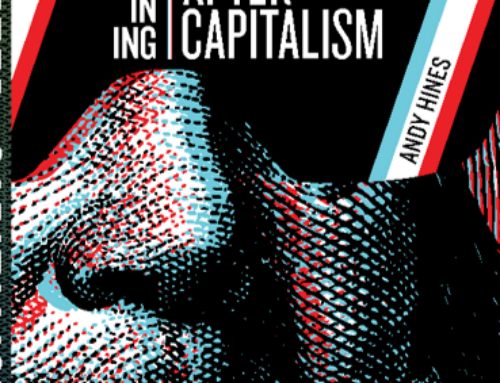Human Behavior and the Principle of Least Effort; An Introduction to Human Ecology, by George Kingsley Zipf (reviewed by alum Greg Turner)
A linguist at Harvard University, Zipf is best known for this, his major (and only well known) work, published just after World War II. In “Human Behavior,” he postulates his “Principle of Least Effort,” which states that any person, “in solving his immediate problems, will view these against the backdrop of his probable future problems (emphasis added)… Moreover, he will strive to solve his problems in such a way as to minimize the total work that he must expend in solving both his immediate problems and his probable future problems. That in turn means that the person will strive to minimize the probable average rate of his work-expenditure over time. And in so doing he will be minimizing his effort.”
Being interested in language, Zipf explains his principle in these terms first. For example, he shows the relationship between the frequencies of word usage and their sizes or meanings. Then he extends his principle to geographic issues such as city sizes, economics, etc. He’s not on ground as firm with these topics as when he speaks about linguistics. Regardless, it’s an interesting read, albeit very tedious.
So what is the relevance to futurists? First, the very definition of his principle involves the concept of the Greater Present Moment, per Anthony Hodgson. The probable future is part of the present, since a person must assess and “calculate” (estimate) the future, to minimize effort now. Zipf speaks of a “cone of an increasingly indeterminate future” and a “corresponding cone for the past with the vertex at the present.” His research on linguistics showed that in certain famous literary works, references to the past follow a formulaic, reduced frequency when compared with references to the present or future. Thus, he constructs one of the Framework Foresight diagrams with which we’re all familiar, the “Cone of Plausibility.” Although the cones extend from each side of the present, the one to the future is much more weighted. Thus, Zipf’s “power law” will look very familiar to us.
Another interesting aspect is the author’s concepts of a “Force of Unification” and a “Force of Diversification.” As might be suspected from the names, these pull the sizes and numbers of systems in opposite directions. Its application by Zipf to the development of cities is interesting, especially to those who’ve read David Kilcullen’s “Out of the Mountains.” Zipf’ evolutionary viewpoint of urban development, in spite of any shortcomings, foresees Kilcullen’s urbanization and littoralization thesis by almost seven decades. Zipf analyzes flows of people and goods, and the drive to minimize the effort of these flows as the tenet guiding location, distribution, and size. Kilcullen is much less academic and much more dramatic in presenting his ideas, but nevertheless they both follow similar themes.
 Also pertinent to foresight were the author’s discussion of two types of change, which he calls “formal” and “semantic.” In Foresight we speak of types of change (e.g., cyclical, events, etc.) but Zipf’s proposal shows a different way of thinking, and a different venue for application. Consider these types when viewing the Framework Foresight diagram. Once Visioning and Planning are completed, the next stage is Action. “Formal” change involves the actual alteration of something’s form, enabling it to do the same job as before, but using changed “tools” to get it done. “Semantic” change, on the other hand, means that the tool remains the same, but the job it does is different. In other words, it involves changing environments, enabling something to continue its utility. Thus, the “Action” one takes to move toward a preferred future can be formal (e.g., a company or organization changes leadership, or reorganizes its departmental structure, etc.) or it can be semantic (e.g., strategy is changed to move into new markets where existing products or production methods can be put to new uses).
Also pertinent to foresight were the author’s discussion of two types of change, which he calls “formal” and “semantic.” In Foresight we speak of types of change (e.g., cyclical, events, etc.) but Zipf’s proposal shows a different way of thinking, and a different venue for application. Consider these types when viewing the Framework Foresight diagram. Once Visioning and Planning are completed, the next stage is Action. “Formal” change involves the actual alteration of something’s form, enabling it to do the same job as before, but using changed “tools” to get it done. “Semantic” change, on the other hand, means that the tool remains the same, but the job it does is different. In other words, it involves changing environments, enabling something to continue its utility. Thus, the “Action” one takes to move toward a preferred future can be formal (e.g., a company or organization changes leadership, or reorganizes its departmental structure, etc.) or it can be semantic (e.g., strategy is changed to move into new markets where existing products or production methods can be put to new uses).
I learned about George Zipf when reading Adrian Bejan’s “Design in Nature.” Bejan, an engineer and Duke University professor, spent his early career designing methods to draw heat off computer chips. In so doing, he discovered patterns in the flow of energy and matter which he also noticed throughout nature. Similar to Zipf, Bejan has projected his specific area of knowledge to formulate a principle, the “Constructal Law,” to explain the formation of structures in nature, including so-called biosocial systems. Both cover much of the same ground, but Bejan is easier to read. — Greg Turner (Houston Foresight alum)





